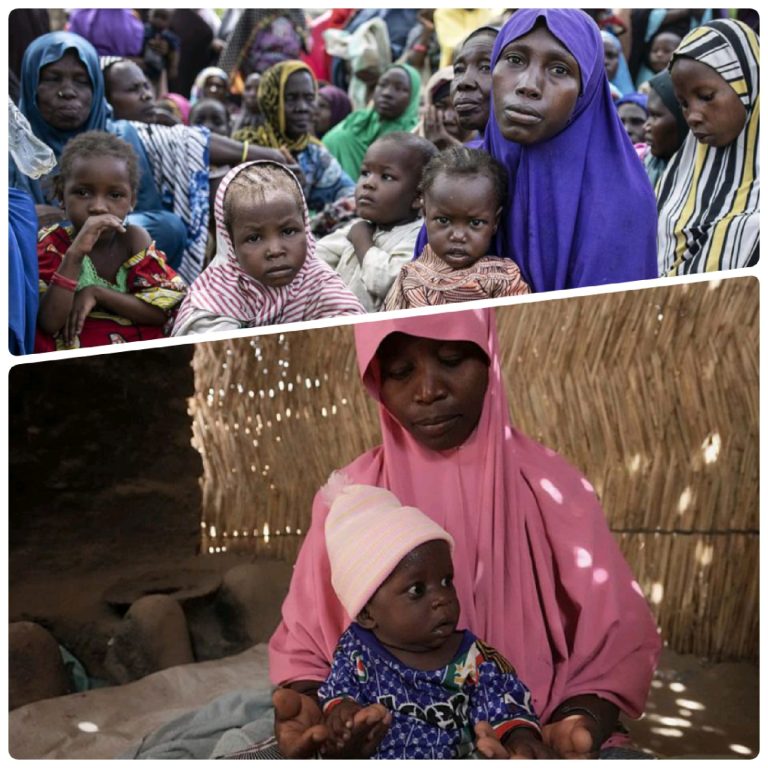Halted U.S. Aid Deepens Starvation Crisis for Displaced Children in Nigeria
Editorial: Reda El ghazal
Clinging to her frail infant beneath a sunlit shelter, Yagana Bulama recounts burying one twin after malnutrition consumed the other. Displaced by Boko Haram’s violence, she joins 400,000 others trapped in Borno’s safe zones, where farming is banned and survival hinges on aid now vanishing. Once sustained by USAID-funded nutrition programs, her community faces collapse after the agency slashed over 90% of its global aid contracts, stripping lifelines like therapeutic feeding centers that kept starving children alive.
The abrupt termination of U.S. support has unraveled years of progress. Mercy Corps halted its malnutrition treatment program in February, leaving clinics like Intersos overwhelmed with surging cases. Staff cuts and dwindling supplies force workers to ration care, turning away families once reliant on daily aid. High mortality is inevitable now, admits a nurse in Dikwa, where one facility struggles to handle 10 critical new admissions daily. Meanwhile, collapsed shelter projects strand thousands at overcrowded transit centers, amplifying risks of disease and desperation.
The ripple effects stretch far beyond Nigeria. From Mozambique’s conflict zones to Afghan clinics, terminated U.S. funding threatens 3.5 million people across 10 nations. HIV programs falter, malnutrition deaths climb, and NGOs warn of catastrophic fallout.
Children will pay the price, says a nutrition expert, estimating 163,500 additional annual deaths if treatment gaps persist. With European donors also reducing aid, vulnerable communities teeter closer to collapse—and deeper into the arms of armed groups offering survival in exchange for loyalty.
-

South Africa Confronts Funding Gap as US Withdraws Support for World’s Largest HIV Program
Edited By: Safae FathiSouth Africa faces a significant challenge as the United States withdraws approximately $427 million in support for... Health -

Gabon’s President Oligui Nguema Slams Rejection of Legislative Candidates
Edited By: Africa Eye Gabonese President Brice Clotaire Oligui Nguema has strongly criticized the exclusion of several candidates from the upcoming... Politics -

Libya: Delayed Municipal Elections Finally Held in Seven Northwestern Towns
Edited By : Tendai Zola Libyans in seven municipalities in the country’s northwest were finally able to cast their votes on... Politics -

Africa: Fight for Justice Over Bolloré’s Ports Empire
Edited By: Fatimatou babdinA coalition of African civil society groups has launched a landmark legal battle in Paris, seeking accountability... Economy -

The Fight to Bring Africa’s Art Home
Edited By : Widad WAHBIFor over a century, thousands of African artifacts, including masks, statues, and royal thrones, were taken... Video -

Bijagós Islands: A Hidden Cultural and Ecological Gem Emerges from Obscurity
Edited By: Fatomatou konèOff the coast of Guinea-Bissau lies the Bijagós Archipelago, a scattering of more than eighty islands where... Chosen for you

 Follow the latest news on WhatsApp
Follow the latest news on WhatsApp  Follow the latest news on Telegram
Follow the latest news on Telegram  Follow the latest news on Google News
Follow the latest news on Google News  Follow the latest news on Nabd
Follow the latest news on Nabd 


















